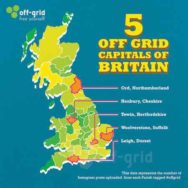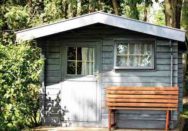Slump in Demand for Power
Coronavirus is laying waste to the global energy system – its biggest shock in at least 45 years, and the implications will be with us for decades. For Off-Grid.net that is something to celebrate!
For the tens of millions of working from home during the coronavirus pandemic, it may feel as though their energy use has soared as extra hours working on laptops, video calling and watching television add to their electricity bills.
But overall electricity demand has plunged by up to a fifth in OECD countries since governments lockdown at the end of March. The sharp decline reflects the closure of many businesses and industrial sites forced to shut because of the pandemic.
The flexibility of our grids is being tested, as demand spikes and cliffs put unprecedented stress on the system. Renewable energy sources, which do not require a supply chain for their fuel inputs, add stress to these systems due their variable nature. The higher the penetration of renewable energy systems in modern electricity networks, the more flexibility, storage capacity, and smart grid capacity is needed to manage sudden spikes in demand. Users are at a heightened risk of blackouts.
On the plus side, carbon emissions have fallen at an unprecedented rate due to the economic lockdown, possibly paving something of a clear path for a green energy transition. But such a transition requires commitment and a plan. The fossil fuel consumption decline and the parallel decrease in C02 emissions are only a temporary phenomenon. 2010, the year we recovered from the Great Recession, also saw highest year-to-year increase in CO2 on record. 2021-2022 may be not much different.
Renewables’ share of overall electricity generation reached a peak of 60.5 per cent in the UK at one stage last month, according to National Grid data.
Britain’s electricity system is not set up to cope with such high levels of renewable generation, said Paul Verrill, executive director at the energy consultancy EnAppSys, who added that the grid is “stable” at around 50 per cent renewables.
The grid was designed around large fossil fuel plants, whose big, heavy spinning turbines can help moderate volatility in the system giving engineers more time to keep it stable.
The International Energy Agency (IEA), one of the most accurate organizations at forecasting and analyzing the latest trends in global energy, released a report yesterday with a real-time view of COVID-19’s devastating impact across all major fuels. The IEA report includes estimates for how energy consumption and carbon dioxide (CO2) emissions trends are likely to evolve over the rest of 2020 with slashed demand for all fuels, in particular those oil derivatives used for transportation.
Large industrial power users, non-essential businesses, schools, and government buildings remain closed. In the past 100 days we have experienced a 6% decline in global energy demand, five times what was lost in the 2008 crisis. In absolute terms, …








